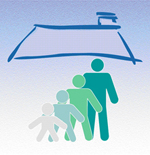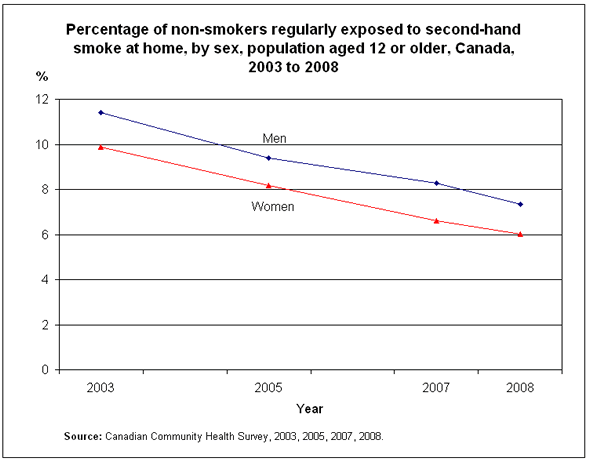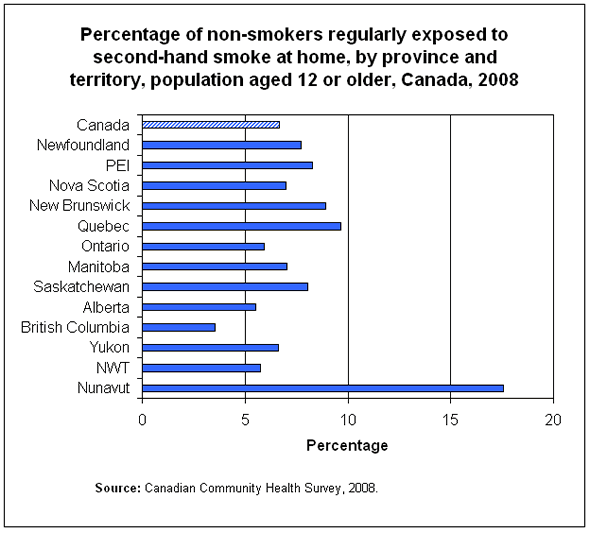Exposure to second-hand smoke at home 2008
Archived Content
Information identified as archived is provided for reference, research or recordkeeping purposes. It is not subject to the Government of Canada Web Standards and has not been altered or updated since it was archived. Please "contact us" to request a format other than those available.

There are negative respiratory health effects from passive smoking. Lung cancer in adults and asthma among children are two of the most common diseases associated with exposure to second-hand smoke.
From 2007 to 2008, the percentage of non-smokers aged 12 or older who were regularly exposed to second-hand smoke at home fell from 7.4% to 6.6%, continuing a downturn since 2003.
A higher percentage of men than women were exposed to second-hand smoke at home.
Chart 1

In 2008, exposure to second-hand smoke at home was highest among 12- to 19-year-olds, with all other age groups at or below the overall average. Men were significantly more likely than women to be exposed to second-hand smoke at home only in the 55- to 64-year-old age range.
Chart 2

Between 2007 and 2008, the percentage of people exposed to second-hand smoke at home decreased or remained the same in all age groups.
Ontario (5.9%), Alberta (5.5), and British Columbia (3.6%) were the only provinces where the percentages exposed to second-hand smoke at home were below the national average. New Brunswick (8.9%), Quebec (9.7%), and Nunavut (17.6%) were above the national average.
Chart 3

In 2008, urban residents reported lower levels of exposure (6.1%) than did rural residents (9.3%). This was true for all age groups except 20 to 34 year-olds.
From 2007 to 2008, exposure to second-hand smoke at home did not increase in any province or territory. There were significant decreases in Quebec and Northwest Territories, as well as in Canada overall.
Source
Additional information from the Canadian Community Health Survey is available from CANSIM table 105-0501.
References
Smoking - prevalence, bans and exposure to second-hand smoke. Shields M. 2007; 18(3): 67-85.
Second-hand smoke exposure - who's at risk? Pérez CE. 2004; 16(1): 9-17.
- Date modified:
